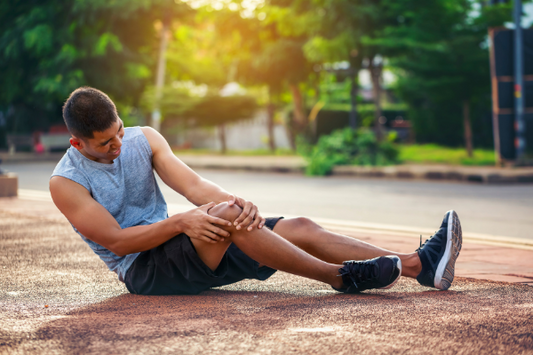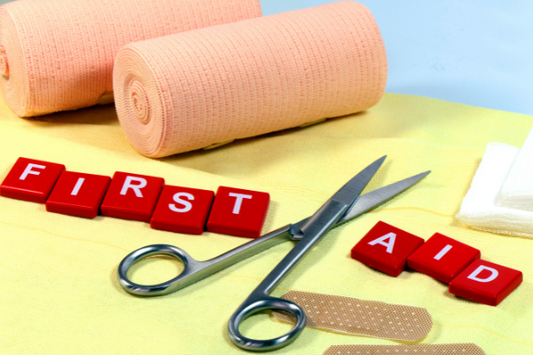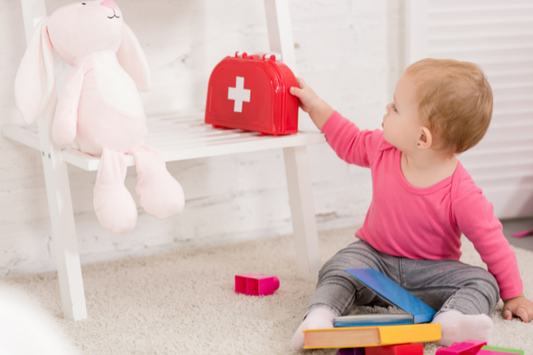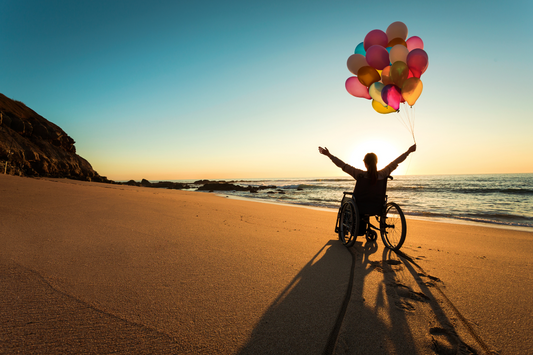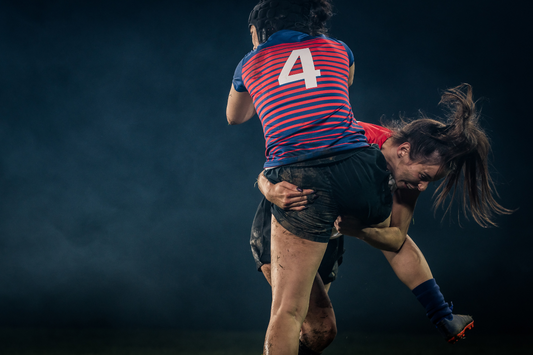Have you ever witnessed a car accident?
Car accidents, especially in areas where emergency services may take hours to arrive can be incredibly overwhelming.
The injuries incurred by victims involved in the car accident are likely to be really frightening.
You may feel instantly overwhelmed.
You might never have seen anything like it before. You might think that there is nothing you can do to help.
But imagine that you are the person horribly injured, and someone stops to help.
There is always something you can do.
ALWAYS! Even if it is only the sound of your voice providing reassurance.
In every first aid class I deliver, I place a heavy focus on the normality of the "stress response".
And the difference between a first aid kit for the car, and a trauma first aid kit for car accidents.
The whole point of this blog is to know what to expect and to have you prepared to take actions that make a crucial difference if you are first on scene.
So I have built this step by step action plan for you, to use as a template to ensure you stay safe, but can effectively provide critical first aid as a first responder if you decide to assist at a roadside accident.
Your safety: you can’t help if you get hurt.
Before leaving your vehicle, stop and take a breath. You need oxygen in your brain to make your best decisions.
Witnessing an accident where people are going to be badly injured is going to prompt a stress response.
The stress response causes changes in your body that make providing first aid more difficult than normal.
These changes include:
- Increased heart rate
- Shakey hands
- Feeling nauseous
- Diminished hearing
- Difficulty following simple instructions.
Be ready! These symptoms are 100% normal! You got this!
Remain in your vehicle and do these 5 things first.
- Put your handbrake on
- Put your headlights on
- Put your hazard lights on (even in the day time)
- Call 000 , via the emergency plus app if possible, so that you can give an accurate location. Answer all questions directly including location and the number of people involved.
- Put your head torch on.

Don't leave your vehicle with out grabbing your trauma first aid kit and putting your gloves on!
Hazard Assessment:
Look for dangers like oncoming traffic, fire or smoke, downed power lines, leaking fluids, and unstable vehicles.
If any of these are present, keep your distance and wait for emergency services.
Do not approach the scene if you feel unsafe.
You may be able to provide verbal reassurance to accident victims from a distance, and gather information useful for emergency services.
 Your Vehicle:
Your Vehicle:
Park your car in a safe location, away from the accident site, so there is plenty of room for police, ambulance and fire to park. I suggeset a minimum of 100 meters.
Having your hazard lights on will warn other drivers and prevent further collisions.
If it is safe to provide help, exit your vehicle from the passenger side, not roadside.
Types of Injuries:
Stay on the phone the whole time.
Tell the operator if there are people who are not breathing, or have major bleeds first.
Then cover less critical injuries as prompted.
Remember, the operator will ask you everything they need to know, to send the right amount of ambulances.
Ensure you remain mindful to communicate well.

Hazards:
Mention any dangers you observed, such as fire or leaking fluids.
Your Name and Contact Information:
They may need to contact you for further details.
Do not hang up until the operator instructs you to.
They may provide further instructions or ask clarifying questions.
Assessing the Scene and Casualties:
If the scene appears safe, approach the vehicles cautiously.
Take your trauma kit with you, so you dont need to run back to your vehicle to get life saving first aid supplies.
Wear Gloves (If Available): This will help protect you from risks of touching fluids such as blood, vomit and other bodily fluids.
Site Assessment: Count the number of injured people and the severity of their injuries. Prioritise those who are unconscious or bleeding heavily.
Do not start CPR on anyone, if there are others whose life can be saved if they receive your first aid. For example, some one who has a major bleed needs to be treated prior to starting CPR.
Do Not Move People from the vehicle:
Only move people if you cannot manage their airway in the vehicle, and after all other patients have been assessed.
Again, manage major bleeds immediately.
Moving someone with a spinal injury can cause further damage.
Only move them if they are in more danger staying where they are.

Provide First Aid: Focus on Immediate Needs
While waiting for emergency services to arrive, begin first aid if it is safe for you. Remember, check for safety all the time, as the situation can change rapidly.
Check for Responsiveness: Squeeze the person's shoulder and ask, "Are you okay?" If they don't respond, check for breathing and major bleeding.
Control Bleeding: Apply direct pressure to any bleeding wounds. Use a tourniquet or roller bandage wrapped tight enough to stop bleeding. This should be applied high above the bleed, and straight across the limb. Tourniquets are safe to use to stop people bleeding to death which occurs in only a few minutes.
Remember, as a first aider, you can not replace lost blood.
CPR : If the person is not responsive and not breathing normally, begin CPR if you are trained to do so.
Follow the instructions given by the emergency dispatcher if you are unsure.
Keep the Injured Warm: Cover them with a blanket or jacket to prevent shock.
Provide reassurance: Speak calmly and reassuringly to the injured. Let them know help is on the way.
Avoid giving false hope or making promises you can't keep.
Use any "walking wounded" to assist you.
If there are multiple casualties, those who are still able to walk can be assigned tasks. Is it is safe, the "walking wounded" can monitor others, apply pressue to bleeds and provide reassurance.
This can distract them from the traumatic moment, and provide you with valuable first aid assistance.
After the Emergency Services Arrive:
Once paramedics and other emergency personnel arrive, they will take over the scene.
IMIST hand over to emergency services.
Again, get to the point. NOW!
An IMIST handover should take around 15 seconds.
I-Identify the number of persons involved.
M- describe concisely the mechanism of injury eg 2 car collision at 100kmp h.
I-injuries of the persons involved. Start with the most serious-unconscious and major bleedings.
S-signs and symptoms of injuries.
T-treatment you have given to each person.
Stay Out of the Way: Allow them to do their job efficiently!
Supply your details:
Police may need to contact you later for a statement.
Legal Considerations:
In Australia, there is a "Good Samaritan" law in most states and territories. These laws generally protect people who provide assistance in an emergency situation from legal liability, provided they act in good faith and without recklessness.
However, it's important to be aware of the specific laws in your state or territory.
After the dust has settled:
It is important to recognise the risk of trauma to your self after assisting people who where badly injured, and may have lost their lives.
Debrief: Talk to someone you trust about your experience.
These services are excellent sources of support
Know the signs of PTSD: If you are struggling to cope, don't hesitate to seek professional counselling or support.
Avoid Rehashing the Event: Try to avoid dwelling on the details of the accident.
Engage in Relaxing Activities: Plan activities that help you de-stress and unwind.
Psychological impact on all involved
Witnessing a car accident can be emotionally distressing.
It's important to acknowledge the potential psychological impact on yourself and others present. You might experience:
- Shock and Disbelief: Difficulty processing what you've seen.
- Anxiety and Fear: Worry about the injured and the situation.
- Guilt and Helplessness: Feeling like you could have done more.
- Flashbacks and Nightmares: Reliving the event in your mind.
If you experience any of these symptoms, it's essential to seek support.
Talking to a trusted friend, family member, or mental health professional can be beneficial.
Remember, it's okay to feel overwhelmed after witnessing such an event.
Your emotional well-being is just as important.
Being first on the scene at a car accident can be daunting, but your actions can be invaluable.
By following these steps, prioritizing safety, and focusing on immediate needs, you can provide crucial assistance and make a real difference.
Remember to also prioritise your own well-being after the event.
External Australian References
National Road Safety Week: https://roadsafetyweek.com.au/
VRA Rescue https://www.rescue.org.au/
St John Ambulance Australia: https://www.stjohn.org.au/
Ambulance Victoria: https://www.ambulance.vic.gov.au/
Queensland Ambulance Service: https://www.ambulance.qld.gov.au/
NSW Government - SafeWork NSW: https://www.safework.nsw.gov.au


